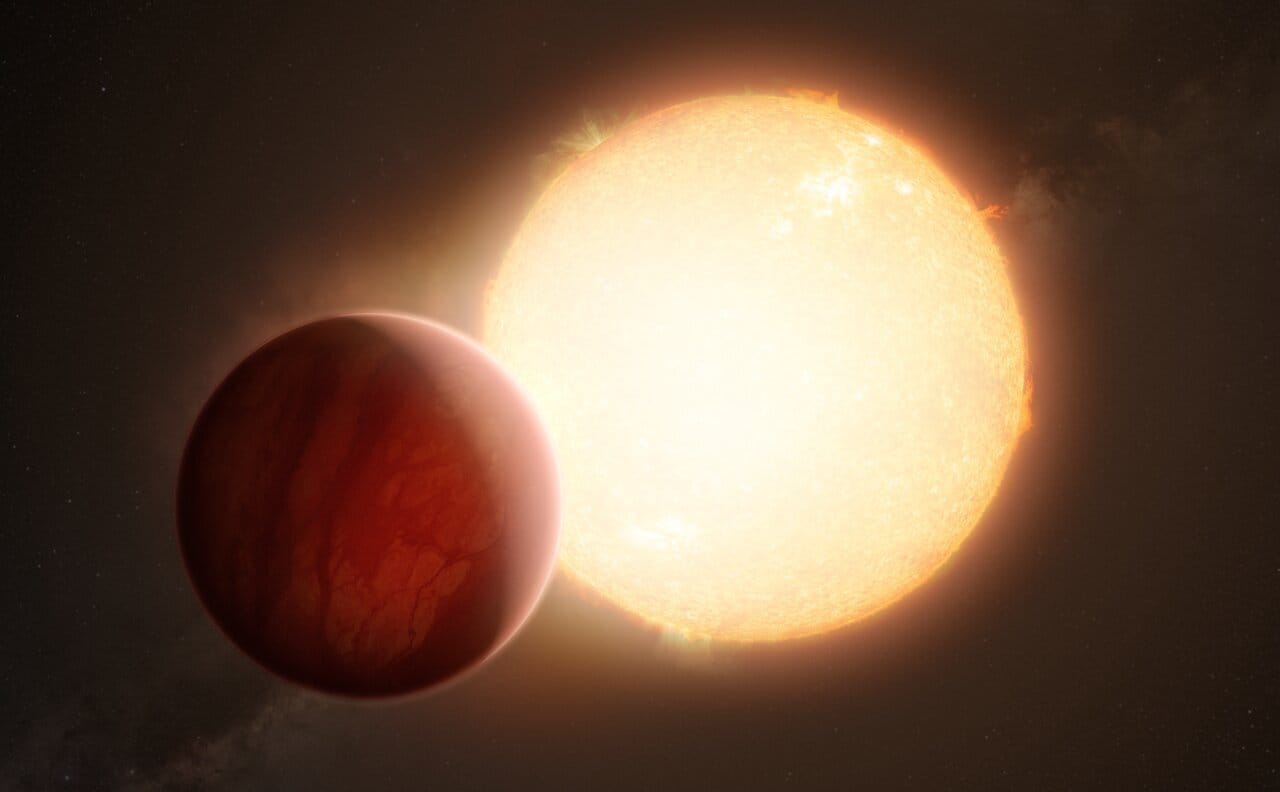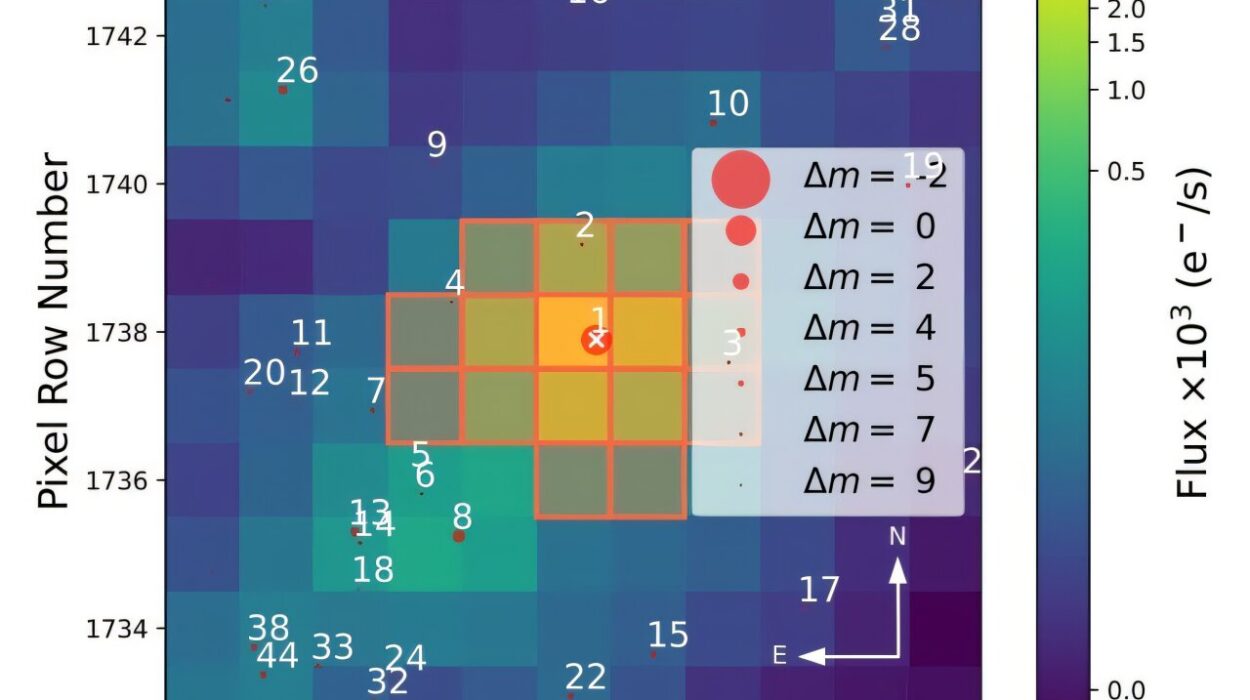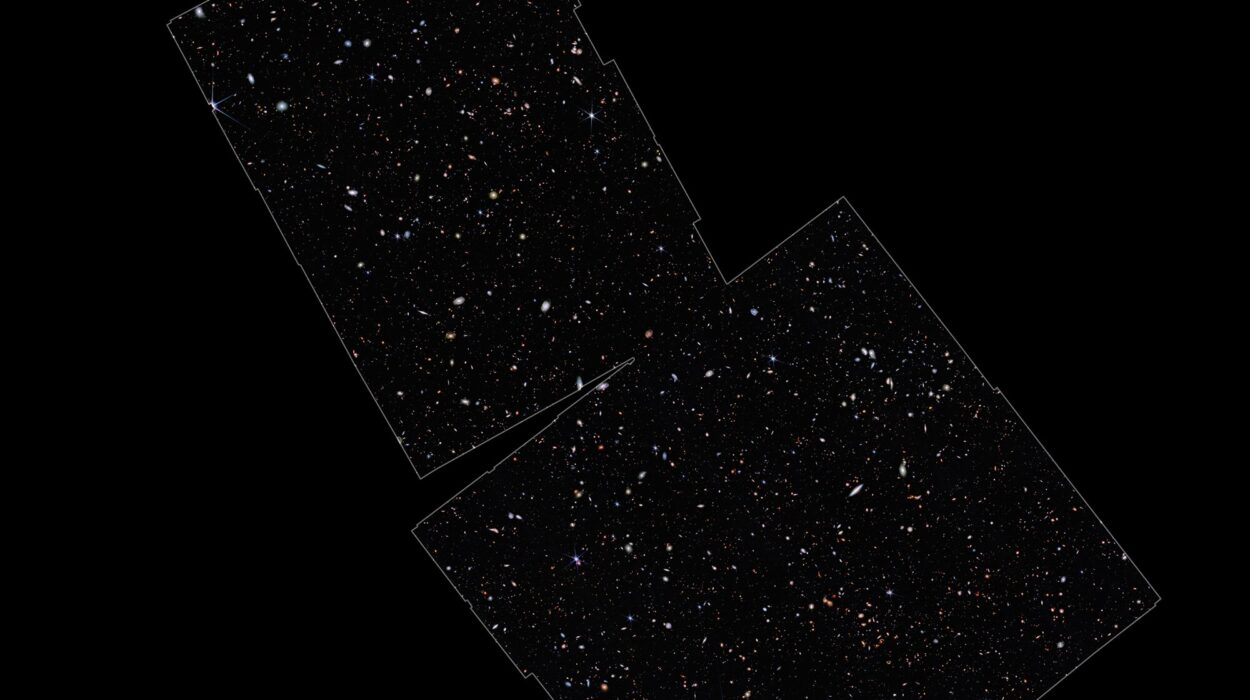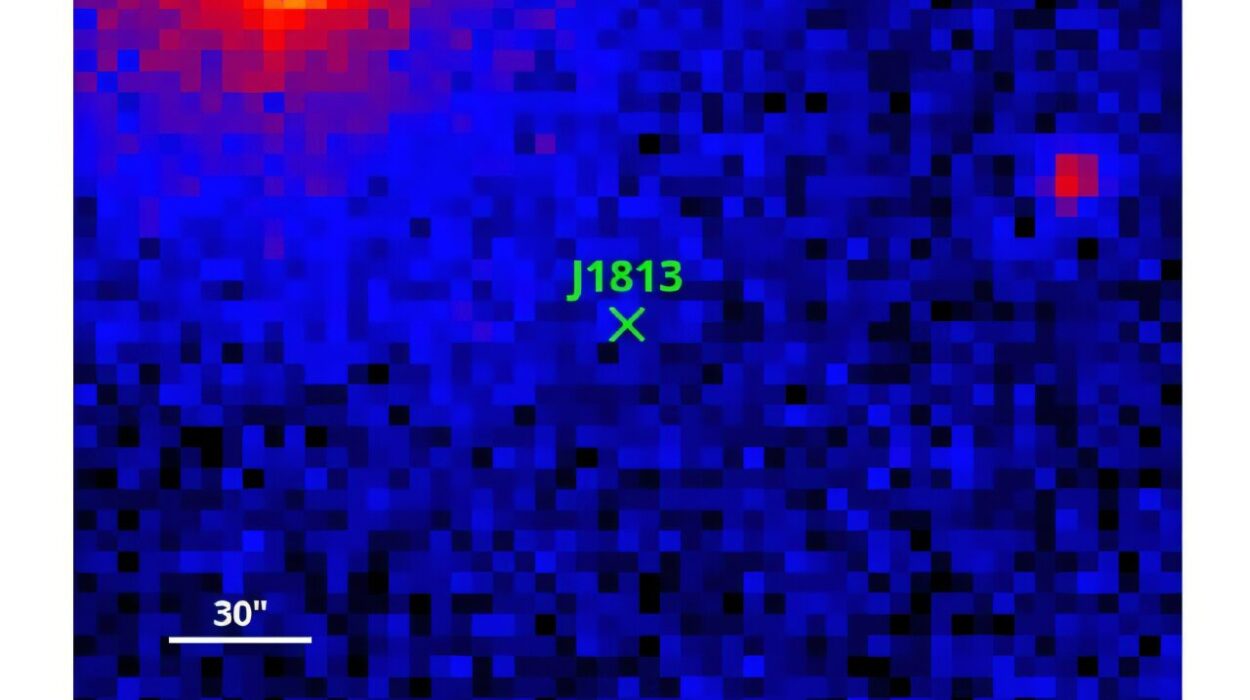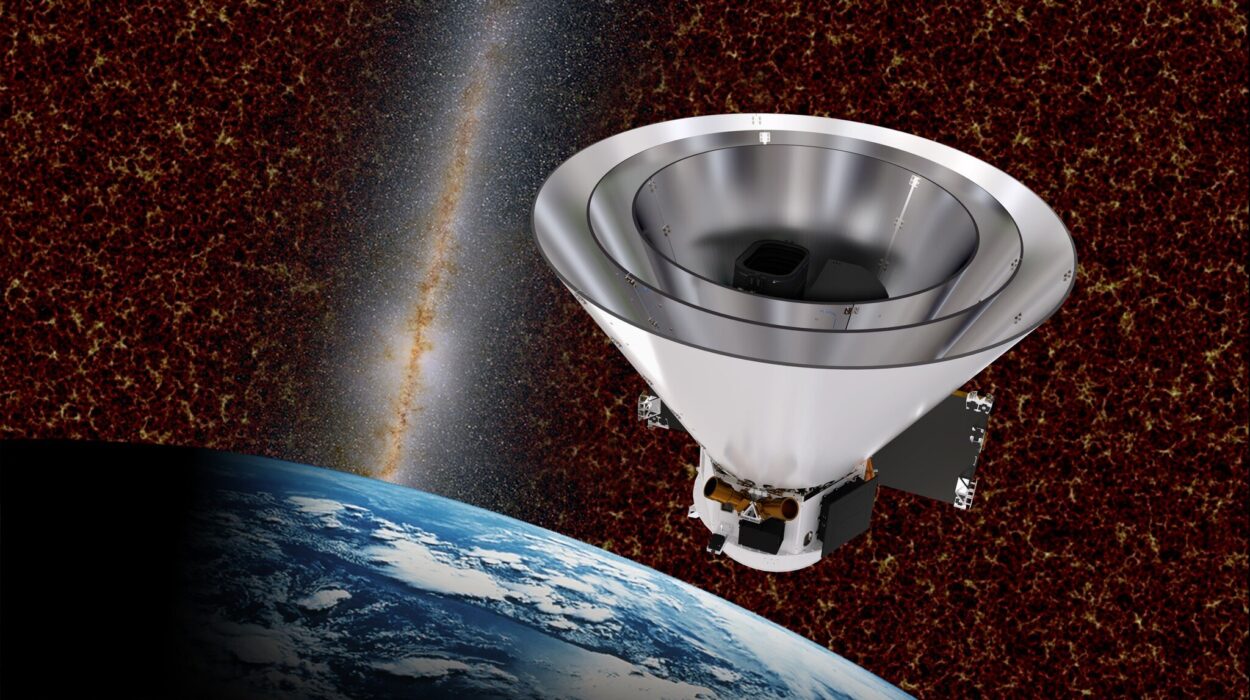There is a silent guardian wrapped around Earth—a force that neither glows nor whispers, yet shields us every second of our lives. It curves invisibly over our heads, deflects charged particles from the Sun, and holds the breath of our atmosphere in place. It is Earth’s magnetic field, a cloak of protection without which our blue world might look more like the dry, desolate plains of Mars.
Yet for all its importance, magnetism is often overlooked in planetary science. We chart atmospheres, measure gravitational pulls, and photograph surface features on distant planets—but the magnetic field remains elusive, a ghost in the data, difficult to see, harder to measure, but absolutely essential to understand.
That may soon change.
A group of researchers from across the globe—Europe, the U.S., India, and the UAE—have put forward a new vision for decoding magnetic fields around exoplanets. Published as a preprint on the arXiv server, their work points toward a new frontier in space science: the ability to not only detect but map magnetic fields on distant worlds. If successful, it could rewrite what we know about how planets form, survive, and maybe even harbor life.
Magnetic Fields: The Planetary Lifeline
To grasp why this research matters, one must understand what a magnetic field really does.
It’s not just an abstract scientific concept—it’s a planetary lifeline. Magnetic fields are born deep within a planet’s core, forged by the turbulent dance of molten metals. This movement generates electric currents, which in turn give rise to magnetism.
For Earth, the result is a vast, teardrop-shaped magnetic field that envelops the planet, deflecting solar wind and cosmic radiation. It is the reason we are not stripped of our atmosphere like Mars, whose weak magnetic field vanished billions of years ago. On the other side of the spectrum, Jupiter’s immense magnetic field dwarfs our own and is strong enough to influence entire moons.
Magnetism, then, is more than a detail—it’s a defining characteristic. It affects weather patterns, surface conditions, radiation exposure, and atmospheric stability. Yet, when it comes to exoplanets—those distant worlds circling stars far beyond our Sun—we know almost nothing about their magnetic fields.
Until now.
Starlight as a Messenger
The key to understanding magnetic fields on exoplanets may lie in the very photons that travel across the cosmos to reach our telescopes. Every time an exoplanet passes in front of its star—a moment called a transit—a portion of that starlight passes through the planet’s atmosphere. And with it, a silent message is carried: evidence of magnetism, encoded in the shape and polarization of that light.
Two particular effects, known as the Zeeman effect and the Hanle effect, are central to this.
The Zeeman effect reveals itself when spectral lines—those telltale fingerprints of atoms—split under the influence of a magnetic field. It’s as if the atom’s voice wavers when bathed in magnetic presence, producing subtle yet detectable distortions in light. This method is well-established in astronomy and has been used to measure magnetic fields in stars and even the Sun. Applying it to exoplanets, however, is far trickier.
The Hanle effect, on the other hand, is more sensitive. It detects how the polarization of light changes in response to even weak magnetic fields, especially when that field is perpendicular to the line of sight. This effect leaves a distinctive mark in a spectral region called the He I 1083 triplet, linked to helium atoms in a planet’s upper atmosphere. Because it works with weaker fields than the Zeeman effect, and operates in atmospheres rather than stellar surfaces, it may be better suited to detecting the whisper of magnetism on distant worlds.
By combining both effects, scientists hope to piece together a puzzle of strength and orientation—effectively painting a picture of a planet’s magnetic field. And since this method uses differential measurement—comparing the light filtered through a planet’s atmosphere to its star—it naturally cancels out background noise, isolating the signal with remarkable clarity.
There’s just one challenge: there aren’t many photons to work with. These signals are faint, and they only emerge from large planets with thick atmospheres that orbit close to their stars. These are the only worlds, for now, whose magnetic fields we might be able to glimpse directly.
The Indirect Echo of Magnetism
For planets further out—or smaller ones whose signals are too weak—there may be another way to sense the unseen.
This second approach doesn’t rely on the planet’s light at all. Instead, it looks to the star, and how it responds to the magnetic flirtations of its planetary companion. If a planet orbits close enough to its host star—within what is known as the Alfvén surface—the magnetic field lines of the two bodies can interact, like guitar strings plucked into resonance.
These interactions create disturbances on the star’s surface. Hot spots. Flickers of magnetic energy that shouldn’t be there. And if they appear in sync with the planet’s orbit, they may be a telltale sign of magnetic contact.
It’s like watching ripples on a pond and knowing that something—something invisible—just touched the water’s surface.
However, this method comes with its own caveats. Stellar magnetic fields are turbulent and unpredictable. A flare, a burst, a magnetic knot can mimic the signal of a planet. Teasing apart which hot spot is caused by which effect is a challenge that requires patience, data, and an intimate understanding of stellar physics.
But there is hope. The majority of exoplanets we’ve discovered so far—thousands of them—tend to orbit close to their stars. These are exactly the systems where magnetic interaction might be strongest. In that sense, the universe has already dealt us a favorable hand.
The Promise of Future Eyes
All of this—direct and indirect detection—rests on our ability to observe faint, distant light with extreme precision. And that’s where the next generation of space observatories enters the story.
Foremost among them is NASA’s Habitable Worlds Observatory (HWO), still years away from launch. But when it does rise into the dark, it may bring with it the instruments capable of measuring magnetic fields on exoplanets for the first time in history. With powerful spectrographs and polarization-sensitive detectors, it could gather the kinds of photons needed to detect the Hanle and Zeeman effects in planetary atmospheres.
Until then, existing telescopes may still be able to gather preliminary data, especially for gas giants with strong magnetic fields. It’s a matter of creative engineering and patient science—drawing meaningful conclusions from the limited light that filters down through interstellar space.
The researchers behind the new study emphasize that we are just beginning. These are first steps, careful and tentative. But they are also bold. For the first time, we’re not just asking what these planets are made of—we’re asking what guards them. What holds their atmospheres together. What invisible, intangible forces may be shaping their destinies.
Why It Matters
Understanding exoplanet magnetic fields isn’t just a curiosity—it’s essential. These fields may determine whether a planet holds onto its atmosphere or not. Whether it shields life from deadly radiation, or is stripped to a barren core. A strong magnetic field could mean habitability. A weak one could spell doom.
And there’s another layer, too—a philosophical one.
We often think of the cosmos as distant and unknowable, a place of dazzling light and color. But magnetism reminds us that some of the most important forces in the universe are invisible, quiet, and easily overlooked. They don’t shine. They don’t roar. They simply exist—holding things together, shaping destinies without ever being seen.
As we peer into the light of distant stars and analyze the ghostly fingerprints of their orbiting worlds, we are learning to listen not just to what is bright and loud, but to what is silent and strong. We are learning to see the unseen.
And in doing so, we may finally understand how planets survive, how they protect life—and whether among those countless dots of light, there might be another world just like ours, cloaked in a magnetic shield, turning quietly in the dark.
Reference: A. Strugarek et al, Detecting and characterising the magnetic field of exoplanets, arXiv (2025). DOI: 10.48550/arxiv.2507.02010
